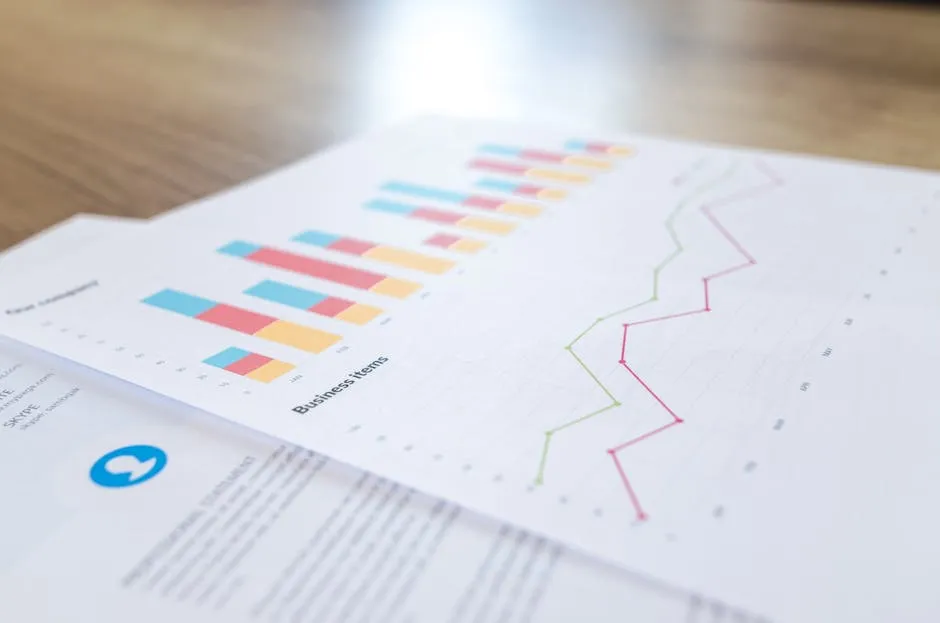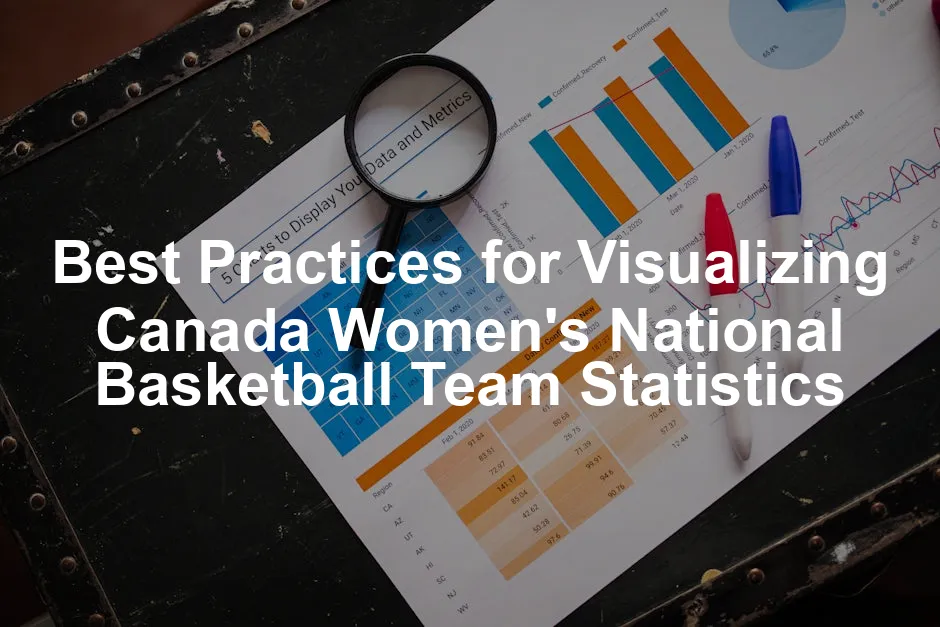Introduction
In the realm of basketball, numbers tell stories that shape a team’s legacy. For the Canada Women’s National Basketball Team, visualizing statistics can bridge the gap between raw data and meaningful insights. Whether you’re a passionate fan, a seasoned coach, or a curious analyst, transforming statistics into engaging visuals can enhance understanding and appreciation of the game. Imagine a world where every assist, rebound, and three-pointer is represented in a way that captivates the audience. By employing effective visualization practices, we can achieve this goal. This article will delve into the best practices tailored specifically for visualizing statistics related to the Canada Women’s National Basketball Team. When we visualize statistics, we not only present data but also create narratives that resonate with audiences. A well-crafted visualization can highlight player performances, team strategies, and historical trends. This is essential for fostering engagement, sparking conversations, and igniting enthusiasm among fans.
This article provides a comprehensive overview of basketball statistics and their significance. basketball statistics
Summary
Visualizing statistics is essential for understanding any sports team’s performance, particularly for the Canada Women’s National Basketball Team. This article highlights key best practices that can improve how we present and interpret player and team statistics. We’ll cover crucial preparation steps, the significance of selecting appropriate chart types, and the necessity of clarity in presentation. Understanding your audience is vital. Tailoring visualizations to meet the needs of fans, analysts, and coaches ensures that the information is both informative and engaging. We’ll discuss how to use various data visualization tools, including Python libraries like Matplotlib and Seaborn, to create dynamic visuals that adapt as data evolves. Moreover, storytelling plays a pivotal role in data visualization. Each chart should narrate a compelling story about the team’s essence and performance. We will also highlight common pitfalls to avoid, such as cluttered charts and vague legends, while emphasizing the importance of color choices and consistent design.
This guide offers valuable insights into summary statistics and their role in data analysis. summary statistics table
Best Practices for Visualizing Statistics
Understanding Your Audience
Visualizations should cater to the unique needs of various audiences. Fans, analysts, and coaches all require different insights. Fans often seek engaging visuals that highlight exciting plays or player performances. They want to celebrate victories and feel connected to the team. For instance, a colorful infographic showcasing a player’s career highlights can draw fans’ attention. On the other hand, analysts look for detailed metrics to dissect game performances. They need clear, precise visuals that convey trends over time. A line chart illustrating a player’s average points per game across seasons would satisfy their analytical cravings. Coaches, however, focus on tactical insights. They need visuals that reveal team dynamics and areas for improvement. Heat maps showing shooting accuracy can help them strategize for upcoming games. Understanding these differing needs is crucial. Tailoring visualizations ensures that each audience receives relevant insights. This approach not only enhances engagement but also fosters a deeper appreciation for the game. By putting ourselves in the audience’s shoes, we can create visuals that resonate and inform effectively.
Preparing Your Data
Before crafting any visualizations, data cleaning is essential. Raw statistics often contain errors or inconsistencies. Cleaning the data ensures accuracy and reliability in your visuals. Start by removing duplicates and addressing any missing values. This step can save you from embarrassing mistakes later. Gathering statistics can be done using various tools. Websites like Basketball Reference and official team stats offer comprehensive data. These platforms are treasure troves of information, providing everything from player averages to advanced metrics. Identifying key metrics is another vital step. Focus on points, assists, and rebounds, as these are crucial for basketball analysis. Once you have cleaned your data and pinpointed these metrics, you’re ready to create compelling visuals. The clearer your data, the more impactful your visuals will be.
Choosing the Right Visualization Tools
Selecting the right tools for visualizing basketball data can make a difference. Popular options include Tableau, Excel, and Python libraries like Matplotlib and Seaborn. Tableau excels at creating interactive dashboards, making it easy to present complex data to various audiences. It allows for drag-and-drop functionality, which is user-friendly. Excel, while basic, is widely accessible. It’s great for quick charts and graphs. However, its capabilities can be limiting for more complex analyses. Python libraries, on the other hand, offer flexibility and customization. They are ideal for those comfortable with coding and looking for deeper insights. Each tool has its pros and cons. For instance, Tableau’s interactivity is fantastic, but it might not be feasible for everyone due to cost. Excel is free but can become cumbersome with large datasets. Python libraries are powerful but require programming knowledge. Choose the tool that best suits your needs and expertise. best data visualization tools for complex systems statistics
Types of Visualizations
Different types of visualizations serve unique purposes. Here’s a rundown of some effective options:
Line Charts
Line charts are excellent for showcasing performance trends over time. For example, a line chart tracking player points per game across seasons can reveal patterns and improvements. These charts highlight fluctuations in performance, making them ideal for analysis.Bar Charts
Bar charts are perfect for comparing statistics among players or teams. They visually represent data side by side, making differences clear. Imagine a bar chart displaying field goal percentages for key players. This straightforward visual can spark discussions about player efficiency.Heat Maps
Heat maps are particularly effective for visualizing shooting accuracy and defensive coverage. They display data density in a visually appealing way. A heat map illustrating shooting locations for the Canada Women’s National Basketball Team can highlight strengths and weaknesses. Coaches love these visuals for strategizing.Scatter Plots
Scatter plots excel at analyzing correlations, such as points versus assists. They allow you to see relationships between variables at a glance. For instance, a scatter plot showing offensive efficiency against defensive efficiency can help identify patterns that require attention. Coaches and analysts both benefit from these visuals. By utilizing these various visualization types, you can effectively communicate statistics related to the Canada Women’s National Basketball Team. Each type serves a specific purpose, catering to different insights and audience needs.
Best Practices in Chart Design
Creating effective charts is an art form. Simplicity is key. A cluttered chart can leave viewers scratching their heads. Keep the design clean and straightforward. Remove unnecessary elements that distract from the main message. The goal is to convey information quickly and effectively. Legends, labels, and axis titles are essential components. They guide the audience through the data. Without clear labels, viewers may misinterpret the information. Ensure that legends are concise and directly relate to the data presented. Axis titles must specify what each axis represents, helping viewers understand the context.

Storytelling with Data
Statistics can tell captivating stories when framed correctly. Crafting narratives around data is essential for engaging your audience. Start by identifying the key messages you want to convey. This could be a standout player’s performance or a particular game’s impact on the season. For instance, consider the remarkable achievements of the Canada Women’s National Basketball Team. A case study could focus on a pivotal match that showcased their skills and resilience. Presenting statistics from that game in a narrative format can create a compelling story. Highlight how individual performances contributed to the team’s overall success.
Conclusion
In the realm of sports analytics, effective data visualization is not just a luxury—it’s a necessity. By implementing the best practices for visualizing statistics, we can shed light on the Canada Women’s National Basketball Team’s performance, making the data accessible and engaging for everyone involved. Whether it’s through line charts, heat maps, or storytelling, the insights derived from these visualizations can empower decision-makers, enhance fan engagement, and inspire the next generation of players. As we continue to evolve in our approach to statistics, let’s celebrate the artistry of data visualization in basketball, ensuring that the stories behind each number are told in vivid detail.
FAQs
What tools can I use for visualizing basketball statistics?
When it comes to visualizing basketball statistics, several tools stand out. Tableau is a favorite among analysts for its interactive dashboards. It allows users to create visually appealing graphics without needing advanced programming skills. Excel is another accessible option, perfect for quick calculations and charts. However, it can feel limited for complex datasets. If you’re comfortable with coding, Python libraries like Matplotlib and Seaborn offer robust capabilities. These libraries allow for highly customizable visualizations, letting you extract deeper insights from your data. Each tool has its strengths, so choose based on your needs and expertise.
How do I choose the right type of graph for my data?
Selecting the right graph type is crucial for effective communication. Start by considering the nature of your data. If you’re tracking changes over time, line charts are your best bet. For comparing categories, bar charts shine. If you want to show relationships between variables, scatter plots are ideal. Heat maps work wonders for visualizing density, like shooting accuracy. Remember, your goal is clarity. Ensure that the chosen graph type enhances understanding, not complicates it. Tailoring the visualization to your data’s characteristics will help your audience grasp the insights quickly.
Why is storytelling important in data visualization?
Storytelling transforms raw data into engaging narratives. It captures attention and fosters a deeper connection with the information. When you frame statistics within a story, you provide context that enhances understanding. This approach helps the audience relate to the data, making it memorable. For instance, showcasing a player’s journey through performance metrics can create an emotional connection with fans. Data storytelling also encourages discussions and insights, leading to a more informed audience. Ultimately, it’s about turning numbers into compelling tales that resonate and inspire.
What are common mistakes to avoid in data visualization?
To create effective visualizations, steer clear of common pitfalls. First, avoid cluttered visuals. Too much information can overwhelm viewers. Keep it simple and focused. Secondly, ensure your labels and legends are clear. Vague titles can lead to confusion. Third, always prioritize clarity. If your audience struggles to understand the visualization, it defeats its purpose. Lastly, don’t overlook color choice. Using similar hues can confuse viewers, especially those with color vision deficiencies. By being mindful of these mistakes, you can create impactful, easily digestible visualizations.
How can I access Canada Women’s National Basketball Team statistics?
Accessing statistics for the Canada Women’s National Basketball Team is straightforward. A fantastic resource is Basketball Reference, which offers comprehensive data on player and team performances. Official team websites also provide up-to-date statistics and performance summaries. Additionally, platforms like StatCan and various sports news outlets regularly publish insights and stats. Social media channels often share highlights and key metrics, making them a great supplement. By utilizing these resources, you can stay informed on the latest statistics and trends in Canadian women’s basketball.
Please let us know what you think about our content by leaving a comment down below!
Thank you for reading till here 🙂
All images from Pexels




